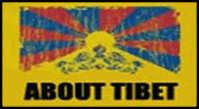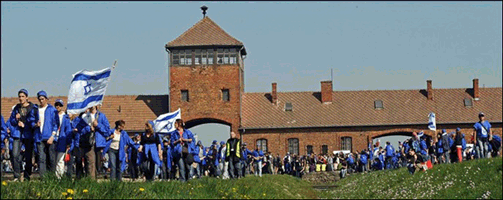

Introduction
Classical Jewish youth movements were the pioneers of informal Jewish education leading to the spread of this phenomenon to many different frameworks, including formal education settings. Informal Jewish education are offered by youth movements which provide for their participants a wide social and educational framework for their teenage years. These include Jewish community centres, adult learning programmes, Jewish family learning programmes, Jewish travel, Jewish camps and retreats, and Jewish youth movements and organizations
Jewish communities around the world find themselves waging a war against Jewish assimilation and the drifting away from Judaism and Jewish identity of their youth. More and more they are realizing that youth movements and informal Jewish education is an important way to achieve their goals, providing Jewish youth with a strong sense of affiliation to the Jewish community and world, and that these movements are celebrated and fully supported in every way.
Informal Jewish education
Jewish informal education shares six defining characteristics and they are
- Person-centered
- Experience-oriented,
- Interactive,
- Promote a learning and experiencing community,
- Culture of education and
- Content that engages.
However, informal Jewish education can be considered a unique category of its own, differing from general informal education in two major respects: its curriculum of experiences and values and its holistic educator. General informal education is often about learning a skill or improving one’s skills, especially life skills, but rarely about ultimate identity or character education however, Jewish informal education is inherently about affecting the lifestyle and identity of Jews. Because of this, these two models of informal education also have divergent conceptions of the role of the educator. Jewish informal educators are inherently shapers of Jewish experience and role models of Jewish lifestyle, as opposed to the good general informal educator who is focused on helping to develop skills and not on shaping identity or group loyalties.
Barry Chazan in his article, Philosophy of Jewish informal education, he defines informal Jewish education as:
Informal Jewish education is aimed at the personal growth of Jews of all ages. It happens through the individual’s actively experiencing a diversity of Jewish moments and values that are regarded as worthwhile. It works by creating venues, by developing a total educational culture, and by co-opting the social context. It is based on a curriculum of Jewish values and experiences that is presented in a dynamic and flexible manner. As an activity, it does not call for any one venue but may happen in a variety of settings. It evokes pleasurable feelings and memories. It requires Jewishly literate educators with a “teaching” style that is highly interactive and participatory, who are willing to make maximal use of self and personal lifestyle in their educational work.
Youth movements vs. youth clubs
In this article, we are going to concentrate on the earliest, and some would argue most potent framework for Jewish informal education - the youth movement. Let us make sure that we understand what a youth movement is, and how it differs from any other youth organization or club.
Broken down to its most simple elements, a youth movement is an organization that has a strong ideology, and focuses its activities and educational content towards that ideology. Every decision made in the movement, from programming to recruitment policies, publications to catering plans, first and foremost must centre on the ideology of the movement. In contrast to this, a club or organization has the participant at its centre, and their needs are first and foremost, even though there may also be an underlying, implicit agenda that runs the club, such as the development of good citizenship, or providing a Jewish social context for its participants.
In truth, most Jewish organizations that utilize informal education cannot be easily categorized as one or the other, the reality of these organizations being far more complex. Each movement/organization has its particular agenda and mix of issues and policies that define where on the spectrum of movement versus club it sits.
The first Jewish youth club established in Britain was the German Street Girls Club in London's East End in 1883, and had as its aspiration the integration of young, newly immigrated, Eastern European Jews into mainstream British society. The German Street Girls Club was the first of many youth clubs established during that period of high immigration by Ashkenazi Jews (Jews of European origin) to the East End until after the Second World War. The goals of these first Jewish youth organisations was to transform barely literate young Polish and Russian Jews into fully integrated proud members of the Anglo-Jewish community in particular, and English society as a whole. This expressed aim was not of assimilation per se, but rather of integration, focusing on the values of the English upper middle classes.
Today, there are tens of Jewish youth clubs found in each Jewish community in Britain, many of them based in Synagogue and communal organisations, and some are nationwide, such as Jewish Scouts and Guides, Maccabi Union sports clubs, and the Association of Jewish Sixth Formers. Another example of these is the Jewish Lads’ and Girls’ Brigade, another uniformed youth organization and one the earliest Jewish youth organisations in Britain. Established in 1895 by Colonel Albert Goldsmid, a senior army officer, for children of the many poor Jewish immigrant families who were coming into Britain at that time. The first company was launched in London's East End but others soon appeared throughout the city and the provinces. In the early days the Brigade catered for boys only, providing them with more than just spare-time activities. It offered food, clothes and the chance to learn skills which might help in finding a job. Then, as now, camps were an important part of Brigade life. Just 19 boys attended the first summer camp in 1896. Today, several hundred youngsters camp with JLGB throughout the year. In the mould of youth clubs rather than movements, JLGB has no expressed ideology, other than providing a fun. weekly program of activities and an exciting program of weekend, summer and winter camps, giving members a chance to participate in an enormous range of sports, activities and hobbies, as well as leadership training and service to the community.
These early Anglo-Jewish youth organisations were clearly social more than ideological in their nature, and the forerunners of today’s Jewish youth clubs and organisations. However, just a few years later those youth clubs were joined by the first classical Zionist youth movements in Britain, with the Federation of Zionist Youth the first to appear in 1910, a specifically British movement. However, most classical Zionist youth movements appeared in the thirties and forties, after they had first been established in Europe. These movements were ideological in their orientation, often having strong links to a political parent movement in Palestine. These youth movements were clearly distinct from the Jewish youth club whose roots were in Jewish acculturation and the Anglo-Jewish establishment. Almost all of these movements are international being found in Palestine and later Israel, as well as all over the Jewish world. They have concerns and policies that transcend Anglo-Jewry, and educate towards values and ideals which if not directly oppose normative society, at the very least, present an alternative vision of society, which is expressed through the sub-culture of the movement. Today there are in the region of fifteen Jewish youth movements in the United Kingdom with a membership of thousands of Jewish youth.
History classical of Jewish youth movementsZionist youth movements play a tremendously important role in Jewish communities across the Jewish world, including Europe, North America, South America, Australia, and in Israel. They are a dynamic and powerful source of Jewish identity and knowledge for hundreds of thousands of young Jews around the world, using their passion and commitment to their ideology and charismatic leaders to literally transform peoples lives. Most were established in Eastern Europe towards the beginning of the twentieth century, motivated by the desire for the national revival of the Jewish people in their homeland, forming the youth wings to many Zionist organizations bringing Zionism to the agenda of the Jewish and larger world. Many of them, like other European youth movements, they were critical of established society and idealized a return to nature and a simpler - rural - way of life.
The first Zionist youth movement was Blau-Weiss (Blue-White), established in Germany before World War I (1912). The Jewish youth movement with the largest membership and most significant impact at the time, though, was Hashomer Hatza'ir (founded in Poland in 1913), with its socialist-Zionist ideology.
Youth movements played an important role in the history of Jewry between the two world wars. Their influence greatly exceeded their numerical importance in community organization, education, political awareness and Zionist consciousness. One of the major ways to achieve fulfilment of their ideology (Hagshama) was to immigrate to Palestine as it was then (termed Aliya – literally to “go up”). As graduates of these European youth movements reached Palestine, they began to make a profound impact to the community there. Practically speaking, they were the builders of the kibbutz movement.
The power of these young ideologues and their ideals became apparent, tragically, during the Holocaust. They remained active throughout this time of destruction, and their leaders orchestrated Jewish organization and resistance in ghettoes and camps. They also helped plan and implement the Bericha (escape from Europe) movement after the Holocaust. Most of the surviving members eventually settled in Palestine. The destruction of the Jewish communities of central and Eastern Europe marked the end of the Jewish youth movements there (although they are still active in Western Europe to this day).
Most of the youth movements that originated in Eastern Europe established worldwide organizations but these had much less impact there, especially in the United States where young people tend to join social organizations that are less political. American Jewish teenagers, thus, mostly belong not to Zionist youth movements but to organizations such as B'nai B'rith, associations of synagogues, or local and countrywide community organizations which also try to impart Jewish-Zionist consciousness, and have later become more focused on Zionism, as the establishment of the State of Israel caused Zionism to become more central to Jewish identity. The European branches of these movements proved more successful and important than their American counter-parts, especially as Jewish life proved more precarious than in North America.
Youth movements in Palestine began to organize in the 1920s, chiefly under the influence of movement alumni who had come from the Diaspora. They stressed togetherness, pioneering and personal fulfilment, especially on the kibbutz. There, as in Europe, their public impact and influence on young people was immense. Most of the movements were affiliated with political entities or even established them. Only the Scouts movement defined itself as non-partisan politically, while also maintained a Zionist ideology, educating its members in a national pioneering spirit and establishing agricultural training groups that founded their own kibbutzim.
Today, Zionist youth movements remain a powerful force in Diaspora Jewish communities around the world, as well as in Israel and on Israeli society. In the Diaspora especially, they play a large part in raising Jewish consciousness among youth. Activities focus on Jewish subjects and encourage members to congregate at Jewish institutions such as synagogues; thus strengthening ties with other young Jews. Most youth movements encourage their members to spend time in Israel and have programs in Israel. Although all Zionist movements have Zionism and Aliya at their core, not all of the participants relate to this or are willing to fulfil these ideals. In fact, some parents in fact feel a little threatened by the focus on Zionism and aliya. However, most realize the benefits involvement in the movement brings, such as increased Jewish identity, knowledge and practice, as well as a social framework, which often they feel far outweigh the risks of their children being led towards the fulfilment of this nationalist agenda.
International Jewish youth movements in Britain and beyond
There are 15 Zionist youth movements active in Britain, most of which have branches in many different countries. There are a handful of movements that are specific to one country, such as in Britain, the USA, Australia, and in Israel. Here are names and the links of some of the major movements in Britain and beyond.
BETAR (the initials of Brit Yosef Trumpeldor, Joseph Trumpeldor Alliance), the educational youth movement of the Revisionist Zionist Organization and, subsequently, the Herut movement (and later Likud political party). (www.betar.org)
BNEI AKIVA is the largest religious Zionist youth movement, and has political ties in Israel to the National Religious Party. World parent body is the Mizrachi movement. (www.bneiakiva.org)
HABONIM-DROR is the amalgamation of two movements – Habonim and Dror. The parent movement is the United Kibbutz Movement and is associated with the Zionist Labour Movement. ( www.habonimdror.org)
HANOAR HATZIONI is a pioneering Zionist scouting youth movement, supporting different types of settlement - kibbutz, moshav and development towns. (www.hanoar.co.uk)
FZY, the Federation of Zionist Youth, is one of the largest youth movements in Britain, taking by far the largest number of participants to Israel at ages 16 for summer tour, and 18 for Year Course. FZY is twinned with Young Judaea in USA and the Tzofim (scouts) in Israel. (www.fzy.org.uk)
RSY-NETZER is the largest youth movement from the Reform Jewish community in Britain. RSY stands for Reform Synagogue Youth and Netzer stands for Noar Tzioni Reformi (Reform Zionist youth). The movement’s parent body is the Reform Synagogues of Great Britain, and is affiliated to the worldwide Reform Zionist youth movement Netzer Olami. (www.rsy-netzer.org.uk)
YOUNG JUDAEA is the largest Zionist youth movement in the USA, with thousands of participants attending camps and tours of Israel every year, as well as the largest single year-program in Israel for foreign students, with 3-400 participants each year. (www.youngjudaea.org)
USY (United Synagogue Youth) is the youth movement associated with the Conservative Movement in America, and is affiliated to the United Synagogue of Conservative Judaism. (www.usy.org)
For more details visit http://www.bermangroup.com/youth/movements.htm
Further reading and bibliography
Sidney Bunt (1975) Jewish Youth Work. Past, present and future, London: Bedford Square Press. 240 pages. Provides a good introduction to Jewish youth work. While there is substantial material examining the then current state of the work, the bulk of the book is devoted to tracing the emergence and development of the work.
Barry Chazan (2003), 'The philosophy of informal Jewish education' the encyclopedia of informal education, A now classic paper exploring informal Jewish education.www.infed.org/informaleducation/informal_jewish_education.htm .
Kadish, S. (1995) 'A Good Jew and a Good Englishman'. The Jewish Lads' and Girls' Brigade 1895 - 1995, London, Vallentine Mitchell.
Rose, C. (1998) A Youth Club for Its Time. A personal history of the Clapton Jewish Youth Centre 1946 - 1976, Leicester: Youth Work Press. Originally marketed as a 'delightful and nostalgic account of life at the club '- this book is something rather more. Celia Rose has gone back to old members and asked them to reflect on their experience. As such it provides some useful insights into the long term impact of Jewish youth work.
Sorin,, G. (1990) The Nurturing Neighbourhood. Jewish community and the Brownsville Boys Club 1940-1990, New York, New York University Press.









Web designed and developed by: Tenzin Sherab (Longsho leader) with funding from National Endownment for Democracy (NED)


